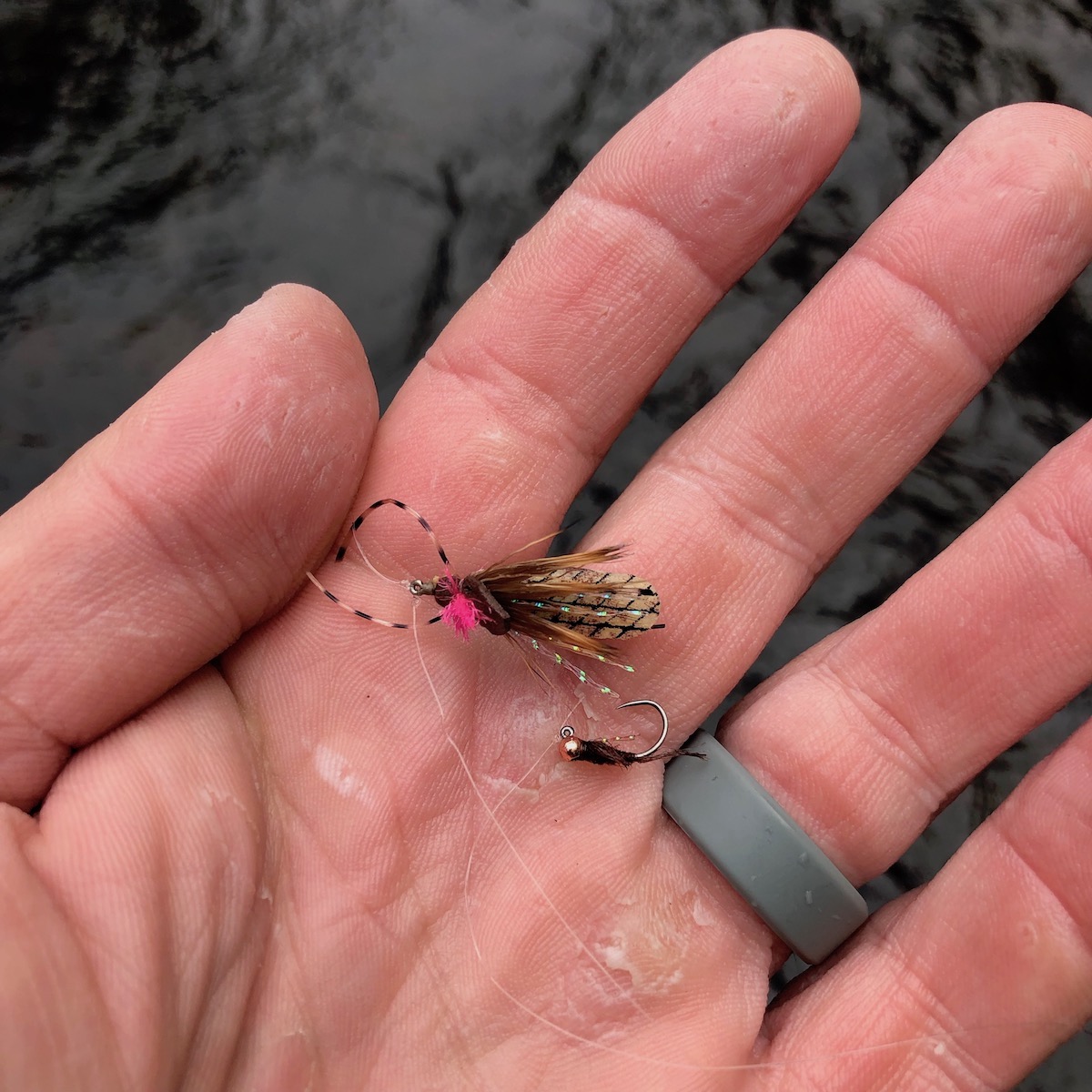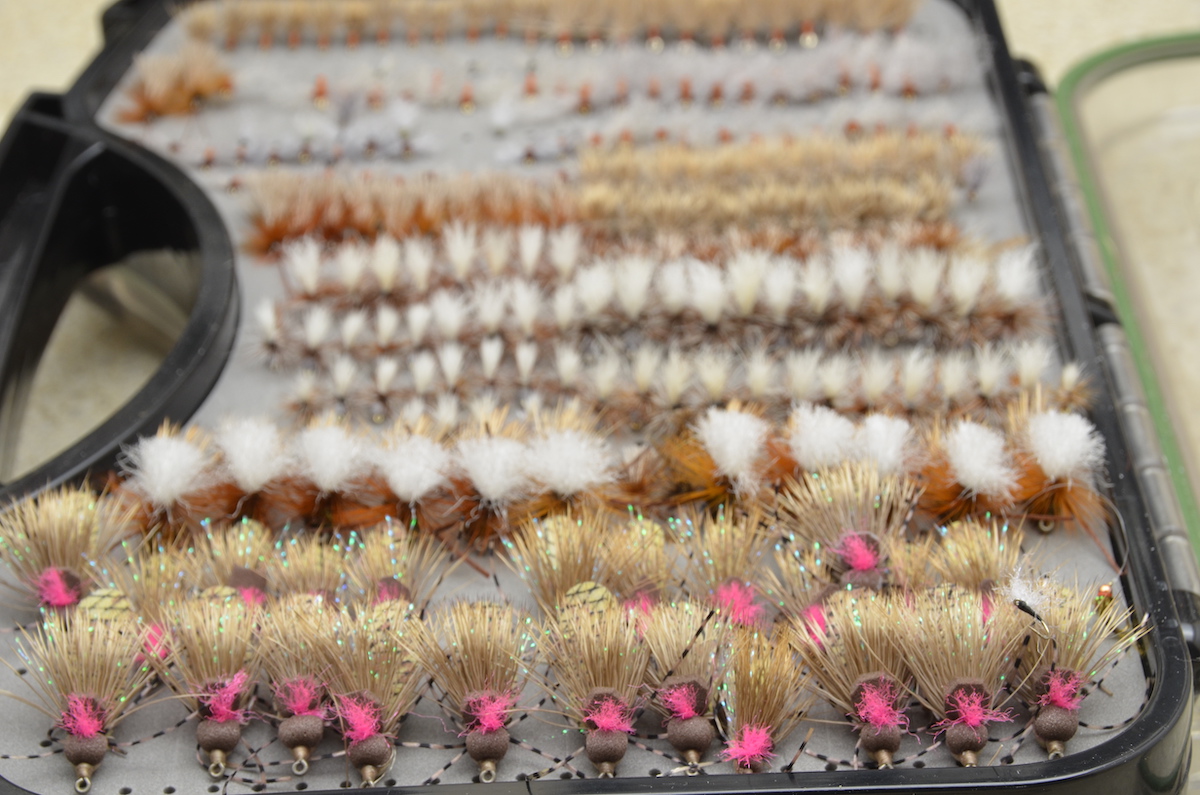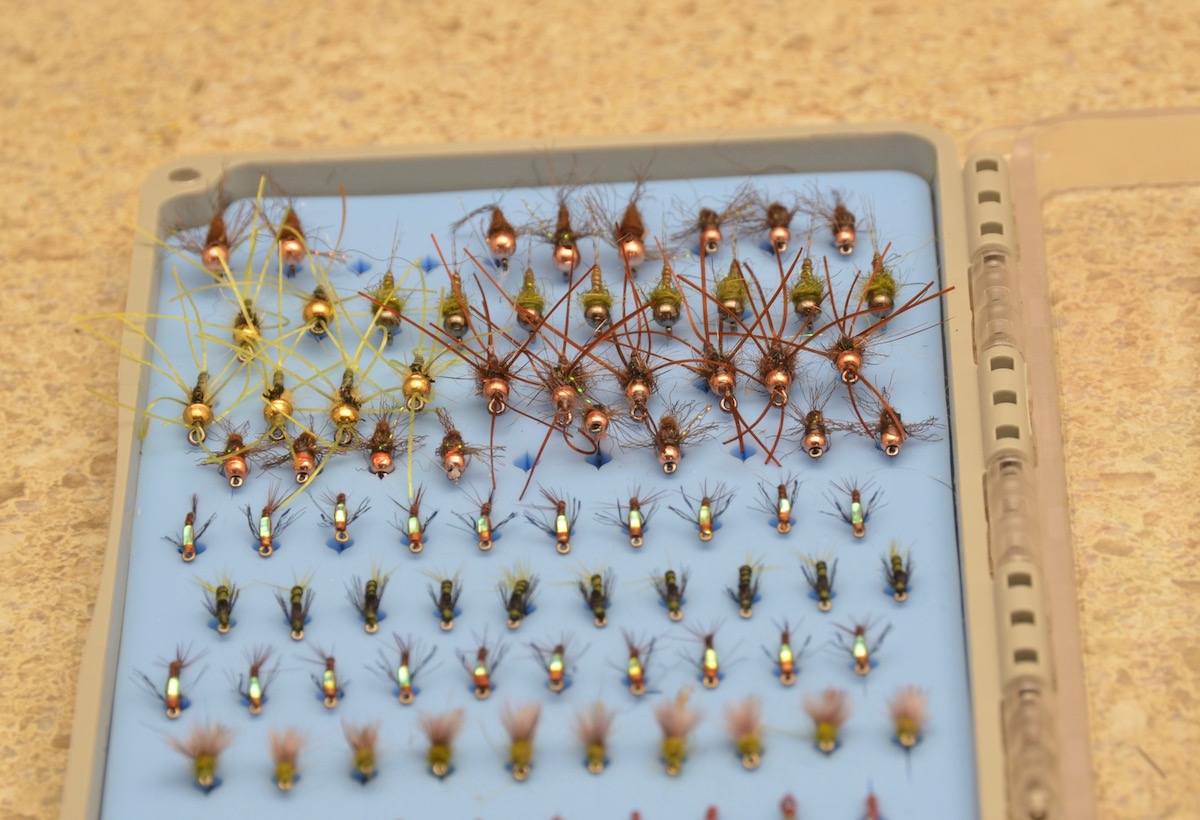To go hand in hand with our discussions on fishing nymphs, I felt I would be remiss in not discussing the finer nuances of fishing with a dry dropper rig. Now, there are some rather controversial methods involving the use of a very thin diameter running line which has become very popular amongst many diehard nymph fisherman; a method of which really isn’t new mind you as Joe Humphreys popularized nymph fishing with a very thin diameter line decades ago, not to burst your bubbles there all you “progressive” nymphers. For many traditional flyfishermen and women, using a strict mono-rig as opposed to a fly line is considered sacrilege and not fly fishing. I won’t open the floor to debate, the decision on how and with what means to fish with in my eyes is left to the person holding the cork end of the fly rod, I have fished with both and I have my own opinions on the matter that are not important. So now that we have that pushed aside, lets discuss the options the angler has when it comes to fishing with a dry dropper rig.
Many might ask why would I want to fish a two fly system in this manner? Well, for one it gives the angler a very easy way to cover two very distinct levels of the water column; the surface and anywhere below the surface to the stream bottom based upon the depth of water and length of your dropper. For some it seems rather easy to comprehend and should be relatively easy to configure. But there are some finer points that will help to ensure you have a day spent catching fish and not untangling birds nests of tippet all day. If you try out these five tips it will lead to a much more enjoyable day on the water, and most often more fish in the net.
How You Tie Your Dropper Matters
To some it may sound ridiculous, but for years I always tied my dropper off the bend of my dry fly. Seems like the most logical thing to do until you start to recognize that you will have days when you drop more fish than you land. The reason being is your tippet is impeding your dry flies ability to penetrate the mouths of the fish you just fooled. There is nothing that bothers me more than losing fish on the take, and if the action is slow, it could be the difference in catching something or nothing. I realize that many people still subscribe to this style of tying on a dropper, and that is entirely fine, but there is in fact a better way and one that I started about twelve years ago as a result of my interest in competitive angling.
By affixing your dropper tippet to the eye of the dry fly you utilize will drastically increase the number of fish you hook and bring to net. The reason being is when you tie the tippet to the bend of your hook, the tippet has the propensity to slide to the barb or beak of the dry flies hook as it inherently gets pulled downward while it drifts in the water column. This can often impede the penetration of the hook beak as the tippet will prevent the beak of the hook from fully penetrating into the trouts jaw creating that scenario of a fooled trout on the dry fly lost on the hook set.
Mind Your Tippet Size
A good rule of thumb is try not to step your tippet size down on your dropper more than 2 sizes from the tippet you have affixed to your dry fly. From experience, if I ever tried to go more than two sizes down I would inevitably find that I would be forcing more tangles in my system. I think this is the case primarily because it helps aid in turn over of the rig during the cast and a drastic deviation from this can create a serious hinge in your set up which in turn can result in more tangles with anything other than a perfect cast. The cast is equally as important, but I will touch base on that later. To go hand in hand with the tippet diameter, the length of the tippet can play a huge role as well in your ability to efficiently cast the rig. From experience I try to keep my dropper rigs shorter than 3 feet as anything longer than that although doable becomes rather cumbersome to cast effectively. If I need to go deeper in the water column then I will scrap the dry dropper system and transition back to a straight nymph rig.
Keep Your Leader Shorter
Sounds pretty simple, but often is overlooked as we as humans are inherently creatures of habit and complacency. I have found myself doing the same, you know, transition to a dry dropper while fishing a 15 foot or longer leader tapered down to some micro hair fine 7x tippet and then attempt to cast this difficult and clunky rig. In short order I quickly realize that I need to unearth my head from the sand and fix my problem otherwise I will be making wind knots down the length of my leader like a line of strung pearls. Keep it simple, and in this case shorter. I often will fish a leader of 7 feet in length to the dry fly as it just casts the system well. If the fish are a bit more finicky, then I will lengthen the leader out to 9 feet and step the tippet down one more size if need be. A good rule of thumb in any form of dry fly fishing is don’t rely on lighter tippet to aid in your ability to fool the fish you chase, focus on making that first cast count and placing that fly into the trouts feeding lane accordingly. I subscribe to the mentality that presentation trumps everything else, make that cast count.
Learn The Tuck Cast
Joe Humphreys and George Harvey advocated this cast, and once you’ve done the same you will understand why. The tuck or steeple cast as we’ve also heard it termed is a great cast that when done properly has your nymphs entering the water first before anything else. If you aren’t familiar with it the simplest description is to stop your forward presentation high so that the bottom most fly jettisons forward and enters the water before everything else in the rig. This will also help get your nymph into the zone quicker and anchor your two fly system in the drift. There is also a lesser chance that you will tangle your system when cast in this manner. The nymph when cast in this manner will also be set up and in the zone almost immediately which can often lead to more detected strikes. The beauty of this cast is it works well when cast and fished either up or down stream.
Tungsten Isn’t Always The Answer
You read that right, I know many are going to scream blasphemy as tungsten in their world is king but often it is overkill fished in this system. Why? For the simple fact you won’t need that much weight to get your nymph into the zone. Now don’t take this as an absolute, there will definitely be times when you will want a tungsten beaded nymph albeit a smaller one, but lets take the current flow of less than 100 cfs on our local waters combined with very window clear clarity; you simply will not need the additional weight. I often hear other local anglers complaining that due to the water being so low this time of year they are losing a lot of flies to snags as they routinely are hanging up. This is a situation where you simply just do not need the faster sinking tungsten, often a small brass beaded nymph will be all that you need, and in some cases a nymph with a lightly wrapped underbody of lead or lead free wire will do the trick. I am an advocate of having a very wide array of nymphs in all different weights in my selection to cover most of the situations that I may encounter in a season. You will find that the smaller your dry fly, the lighter your nymph will need to be to keep that dry fly afloat.




